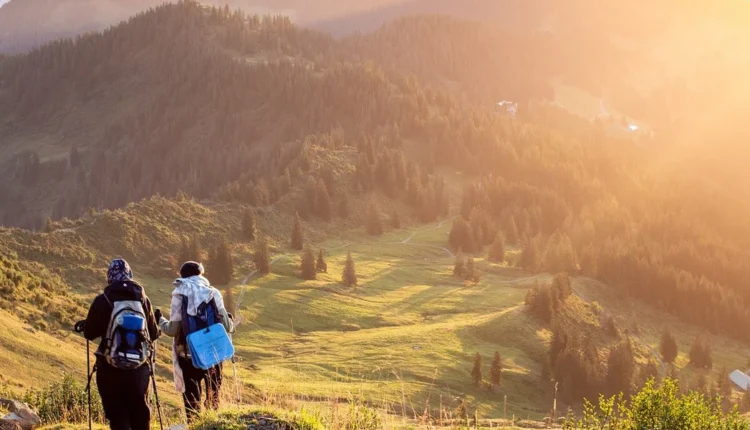Introduction: Walking Beyond the Path
Hiking is far more than a recreational pastime. At its heart, it is an ancient dialogue between humankind and nature, a simple act of placing one foot before the other that unlocks moments of reflection, discovery, and awe. Whether ascending alpine ridges, meandering through shaded forests, or following coastal cliffs kissed by salt-laden breezes, hiking transforms movement into mindfulness. It invites us to slow down, to see the world not as a series of destinations but as a living, breathing landscape that reveals its secrets to those willing to walk with intention.
The Essence of Hiking: Simplicity Meets Soul
At first glance, hiking might seem nothing more than walking in nature, yet the experience transcends physical exercise.
-
A journey inward: Freed from daily noise, hikers often discover clarity and calm in the steady rhythm of their stride.
-
Immersion in the present: Each step roots us in the here and now, as birdsong, shifting light, and earthy scents replace screens and clocks.
-
Connection to place: Trails carry stories—geological, historical, cultural—whispered through weathered rocks and ancient trees.
-
Physical vitality: Beyond the scenic views, hiking strengthens muscles, improves cardiovascular health, and sharpens balance and coordination.
This blend of simplicity and depth makes hiking both universally accessible and endlessly profound.
A World of Trails: From Gentle Rambles to Rugged Peaks
One of hiking’s greatest gifts is its inclusivity; there is a trail for every temperament and level of ambition.
-
Day hikes: Short, local paths through forests, urban parks, or wetlands offer quick yet meaningful retreats into nature.
-
Long-distance trails: Routes like Spain’s Camino de Santiago or the Appalachian Trail in the U.S. transform hiking into a weeks- or months-long pilgrimage.
-
Mountain ascents: For those seeking physical challenge and panoramic reward, alpine trails offer a dance with altitude, weather, and endurance.
-
Coastal walks: Paths that hug rugged shorelines reveal the ever-changing conversation between land and sea.
In each form, hiking presents not only physical landscapes but also inner landscapes shaped by mood, reflection, and discovery.
Preparing for the Path: Wisdom Before Wandering
Thoughtful preparation ensures that the beauty of hiking is experienced safely and deeply.
-
Know your trail: Study route maps, elevation changes, and weather forecasts to align your plans with your fitness and experience.
-
Wear wisely: Breathable layers, sturdy footwear, and weather-appropriate gear protect comfort and safety.
-
Pack essentials: Water, snacks, navigation tools, a first-aid kit, and emergency supplies are companions that often remain unseen until truly needed.
-
Respect nature: Follow Leave No Trace principles—stay on marked trails, pack out what you pack in, and avoid disturbing wildlife.
-
Hike mindfully: Listen to your body, adjust pace as needed, and embrace pauses not as delays but as opportunities to observe and rest.
Preparation becomes part of the ritual, transforming anticipation into responsibility and respect.
The Transformative Power of Hiking
Beyond scenery and exercise, hiking often leaves an imprint that lingers long after boots are unlaced.
-
Perspective and humility: Standing before ancient cliffs or vast horizons reminds us of our smallness in the grand tapestry of time.
-
Mental clarity: The gentle repetition of footsteps can quiet anxieties, making space for creative thoughts or long-overdue decisions.
-
Shared stories: Hikes taken with friends or family become shared narratives—moments of laughter, challenge, and triumph etched into collective memory.
-
Resilience and patience: Nature seldom conforms to our plans; sudden rain, rocky climbs, or unexpected detours teach adaptability and perseverance.
These lessons, learned quietly along winding paths, often return to guide us in daily life.
Hiking as a Cultural Thread
Across continents and centuries, walking trails have linked communities, traditions, and spiritual practices.
-
Pilgrimage routes: Paths like Japan’s Kumano Kodo or Ireland’s St. Kevin’s Way merge physical journey with spiritual reflection.
-
Trade and history: Ancient trade routes once carried salt, silk, and stories, now retraced by modern hikers seeking connection to the past.
-
Local lore: Legends of spirits, hidden springs, or sacred groves infuse trails with narrative, deepening the experience beyond scenery.
Hiking, in this sense, is not just personal recreation but participation in a living heritage shared across generations.
Embracing Modern Trends: Hiking in the Contemporary World
While rooted in ancient practice, hiking today evolves alongside modern lifestyles and values.
-
Digital tools: Apps and GPS make navigation safer, though wise hikers balance technology with traditional map-reading skills.
-
Community groups: Social media and local clubs encourage newcomers, making hiking more inclusive and diverse.
-
Mindful hiking: Practices like forest bathing (shinrin-yoku) emphasize presence over pace, transforming hikes into moving meditations.
-
Sustainability focus: Awareness of trail erosion, wildlife impact, and climate change fosters a sense of stewardship among hikers.
These trends illustrate hiking’s adaptability—honoring tradition while welcoming new approaches to connection and care.
Conclusion: Walking as a Way of Being
At its core, hiking is a return to something deeply human: exploration not driven by conquest, but by curiosity and reverence. Each trail invites us to see anew—to trade hurry for humility, noise for silence, and expectation for wonder.
Whether a quiet morning walk in local woods or a strenuous climb to a wind-swept summit, hiking reminds us that beauty lies not just in the view, but in the steps that carry us there. It teaches that the true journey is as much inward as outward—a slow, deliberate dance with the world that, step by step, reveals who we are and where we belong.


Comments are closed.